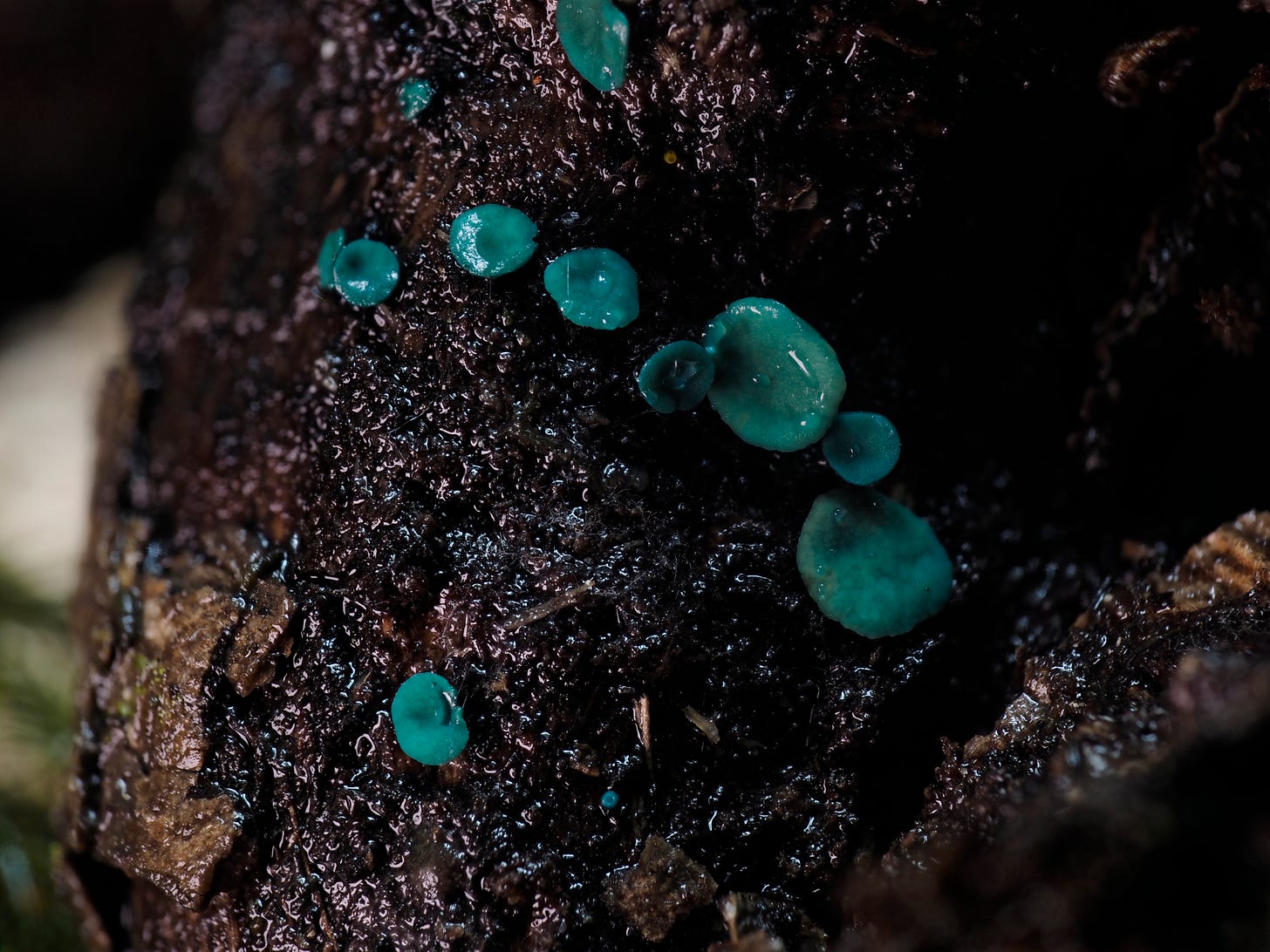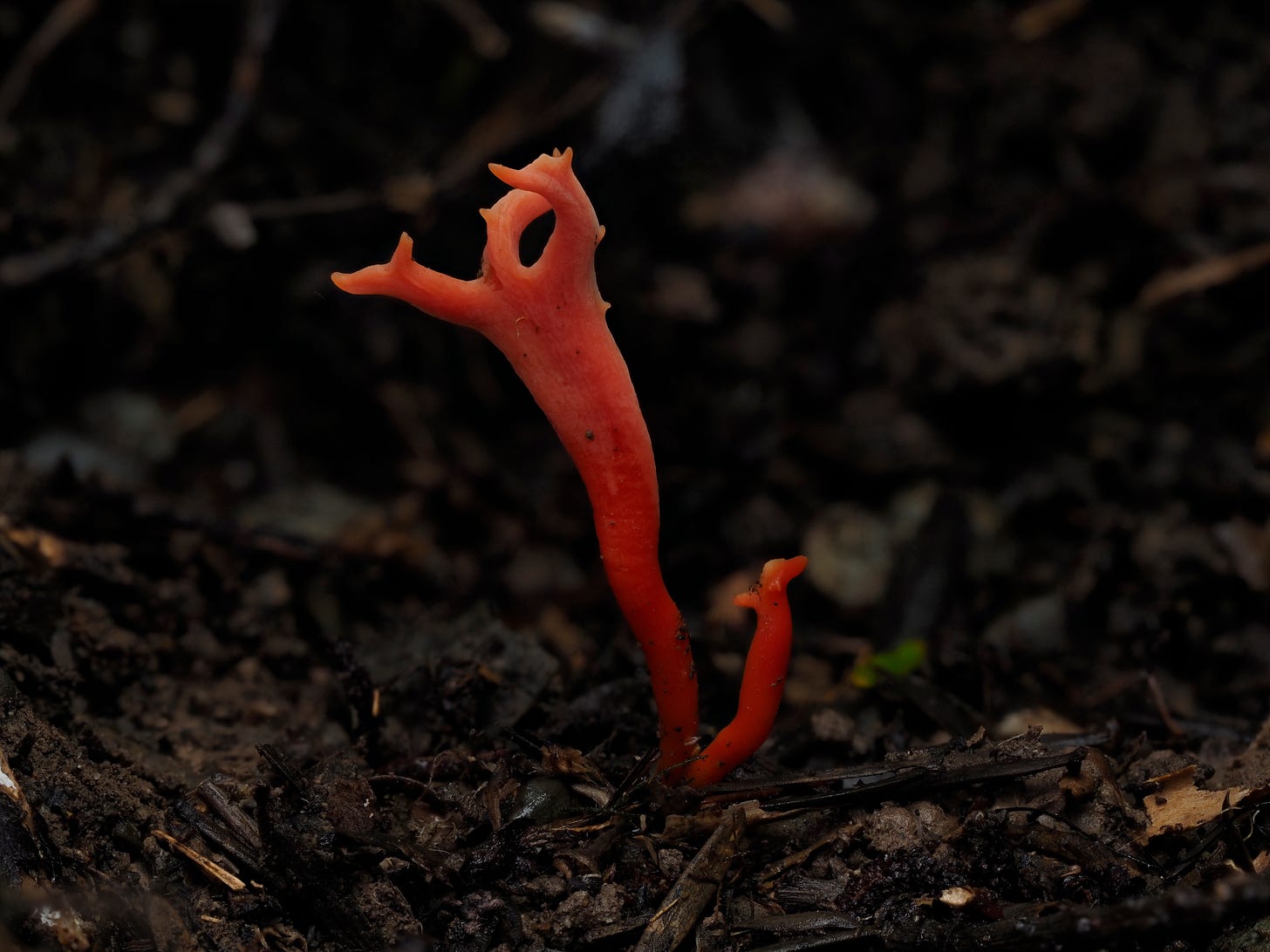Kahikatea Walk at Peel Forest
After heavy rains over the Easter break, heaps of mushrooms popped up. This is what I spotted in a small section of Peel Forest.
At Peel Forest, the Kahikatea Walk passes through one of South Canterbury’s last pockets of lowland podocarp forest, where kahikatea once grew alongside tōtara and mataī.
In te reo Māori, kahikatea names Dacrycarpus dacrydioides, a tall conifer once common in Aotearoa’s swampy lowlands.
Swampy would be the common theme over the week. Heavy rain rendered half of the DOC campground a mushy bed of soaked grass and muddy tire tracks from campers maneuvering their vehicles.
I headed to the forest to see what new growth had emerged.
Exploring the Kahikatea Walk, I didn’t go but 200 meters, too distracted by what I was finding.
One of the most photogenic finds of the foray happened by accident. A teepee of branches was covered in various species, from minuscule Phaeomarasmius ciliatus to Crepidotus parietalis and Resupinatus vinosolividus.
But further into the bush, I’d find a branch completely covered in orange fans.



Anthracophyllum archeri are typically found in tropical regions, and the last (and only other time) I came across them was at Ba Ho outside Nha Trang in Vietnam. One person on IG commented that the second photo gives serious Birth of Venus vibes.
The Honey Mushrooms (A. novae-zelandiae) were out in full force, yet their bioluminescence was very faint in the veil. I suspect the cold temperatures affected their luminosity.
Small red coralloid mushrooms also made an appearance, like small flames lighting up the forest floor.

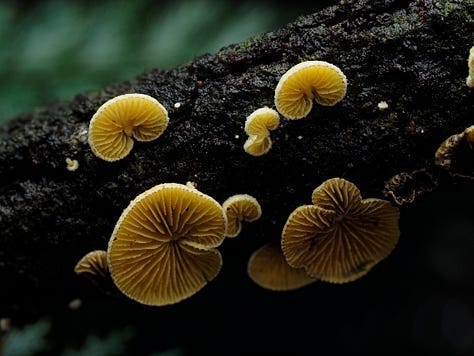

Finding many Bird’s Nest Fungi at different stages of growth gave me the opportunity to use my new Swiss Army Knife, and as I’ve seen done before, I sliced a young one in half, exposing the peridioles.
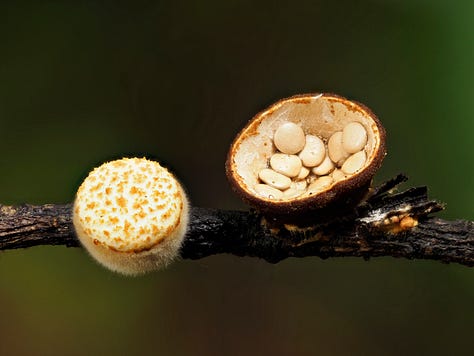





Tiny Gloiocephela sp. growing on leaves.

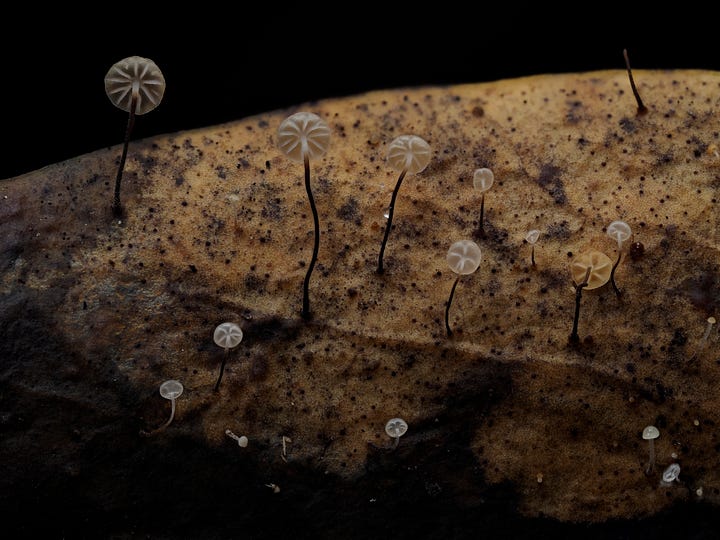


Immediately recognizing the distinct spotted cap of a species I’ve seen a few years back, Hohenbuehelia sp. ‘Ahurriri’ is commonly found growing here.


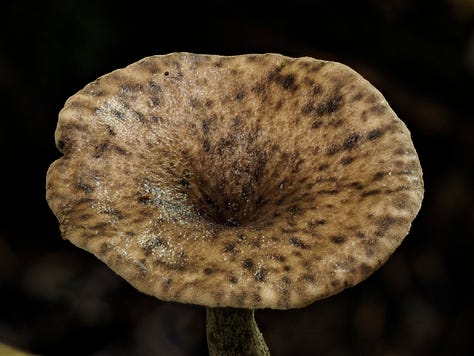
This stem-growing Hohenbuehelia is rare—only a few species in the genus have stems. It branches off early in the group’s family tree.
It lacks the thick-walled cystidia some relatives have, but it still has the genus’s trademark sticky cells (gloeosphex cystidia) that snare tiny worms (nematodes).



Young puffballs grow at the base of a rotting tree trunk.

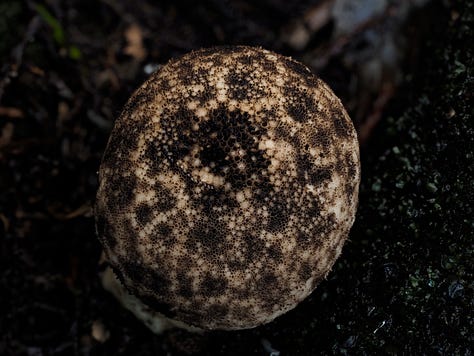

Another interesting find were tiny caramel-colored, fava bean-like bulbous growths from the soil along the track.
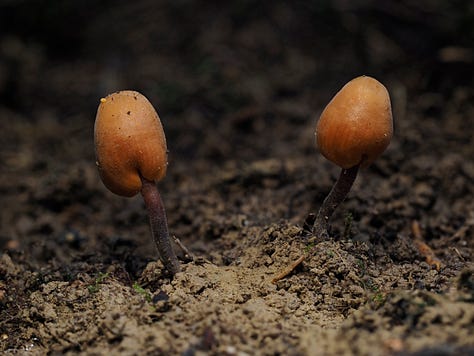


The shape of the cap reminded me of other secotioid species where the gills are just starting to emerge. When bisected, I noticed the gills were pink, and the stipe was a dark blue to purple color with tiny hairs (caulocystidia).
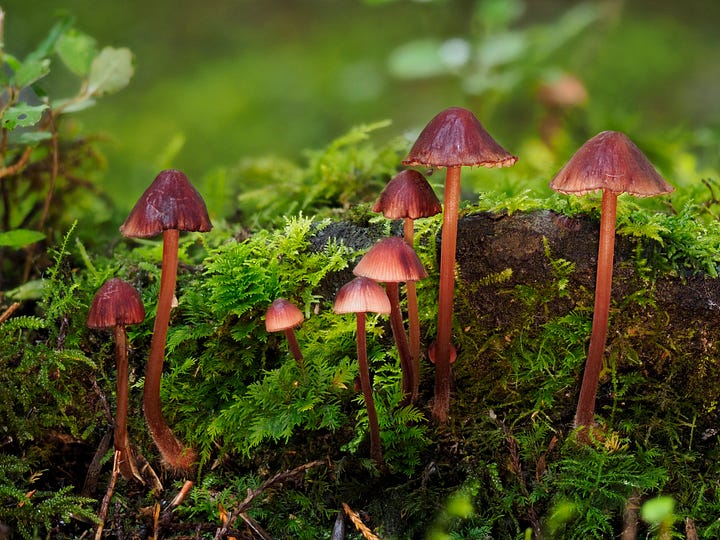


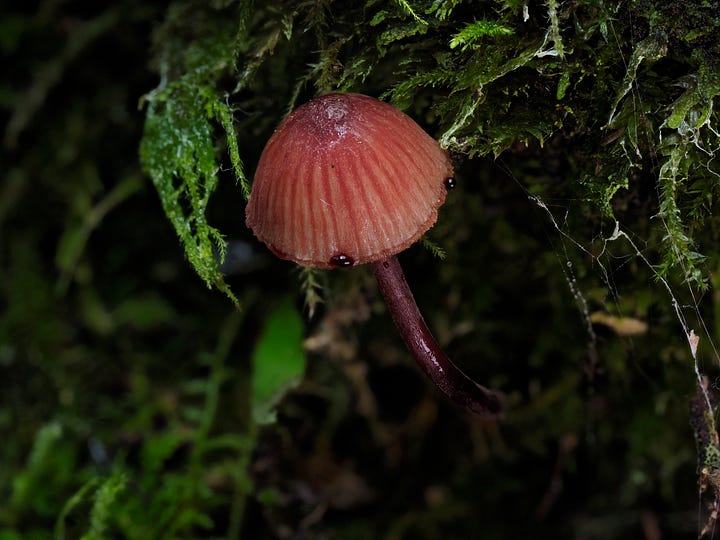
Bruised Mycena mariae darkened red, and when cut they oozed blood, a common trait with Bleeding Mycenas.


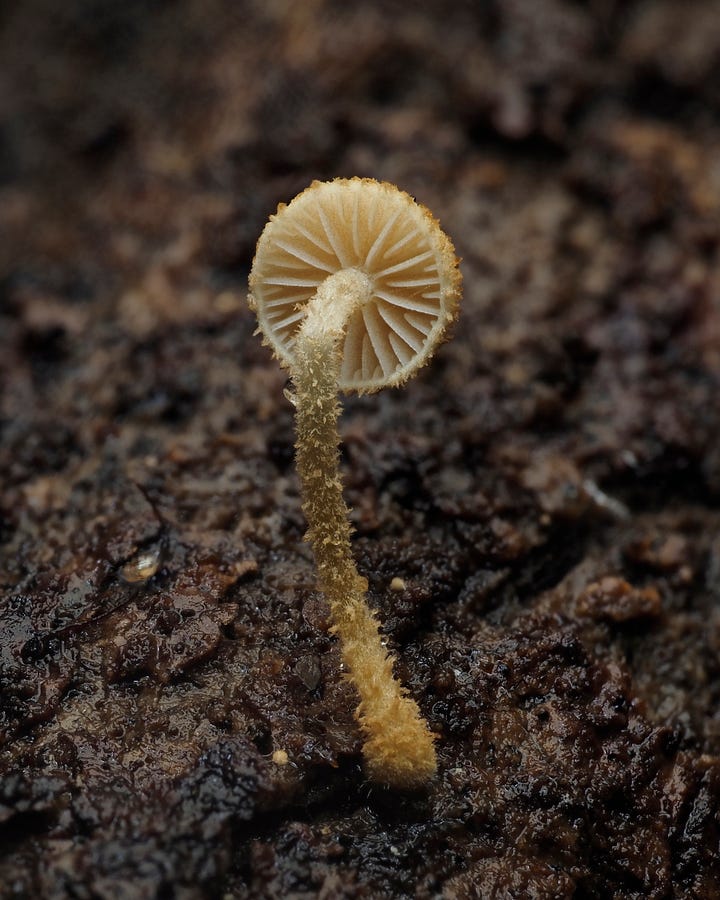
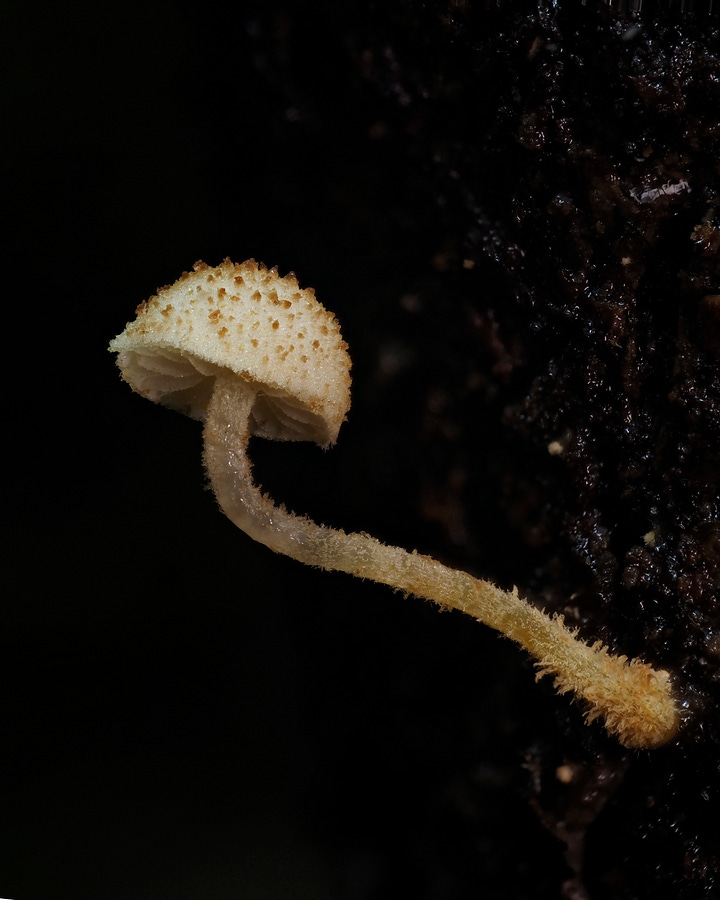
These tiny Phaeomarasmius ciliatus were a rare find. On iNaturalist, this species had only been observed 10 other times in the country.

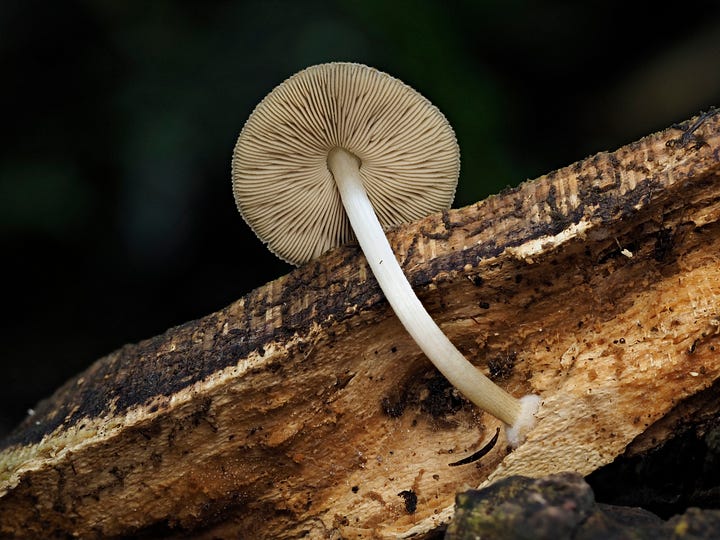
The morphology of Resupinatus vinosolividus made me pause and spend quite a bit of time photographing their intricate gill patterns. Upon closer inspection, I noticed small white insect larvae taking residence.

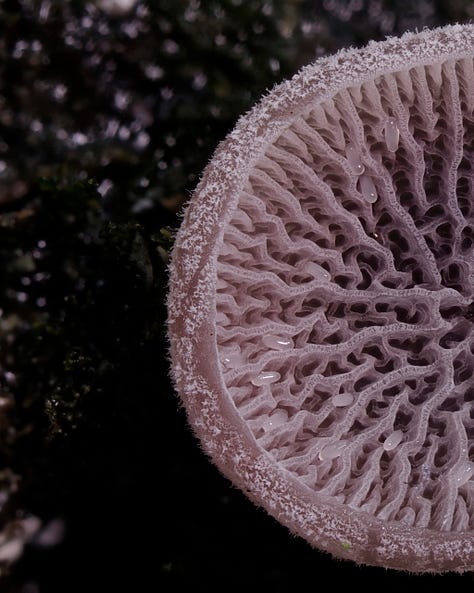

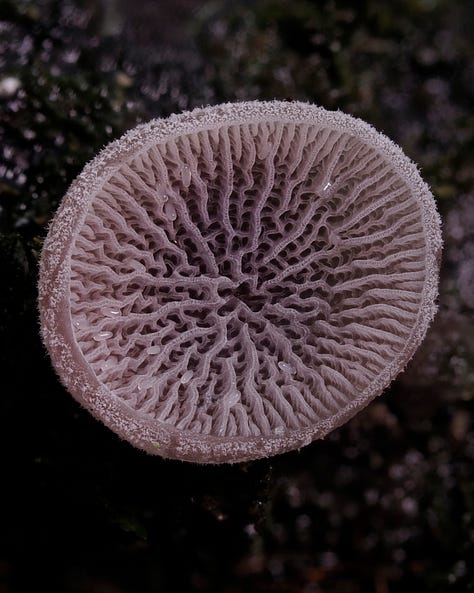


Many different-sized fruit bodies covered branches, and the smaller ones appeared more floccose and covered in white powdery hairs. For scale, I took a photo with New Zealand’s 20c coin featuring a Māori carving of Pūkaki.


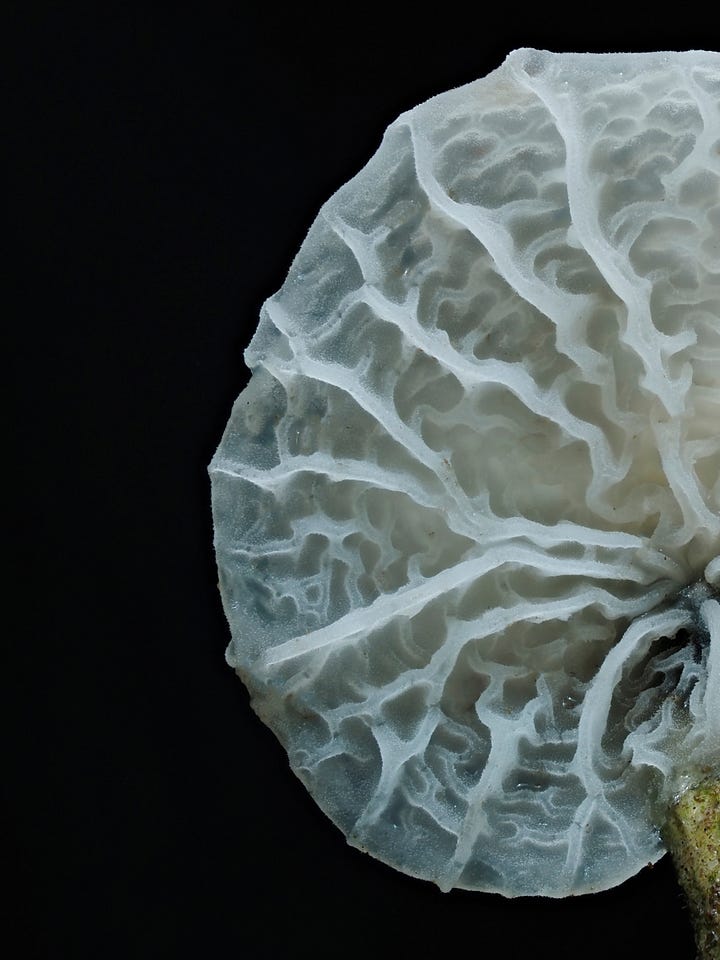

And on a final note, the mycological word of the day: “anastomosing” gills - where the gills are not simply parallel lines but instead branch, fork, and connect to one another, forming a complex network. I found this Tetrapygros sp. that reminded me of a pruney finger.
While I spent the majority of the time at the Kahikatea Walk, I managed to take one last trip up to Acland Falls…
Keep reading with a 7-day free trial
Subscribe to Myconeer to keep reading this post and get 7 days of free access to the full post archives.






